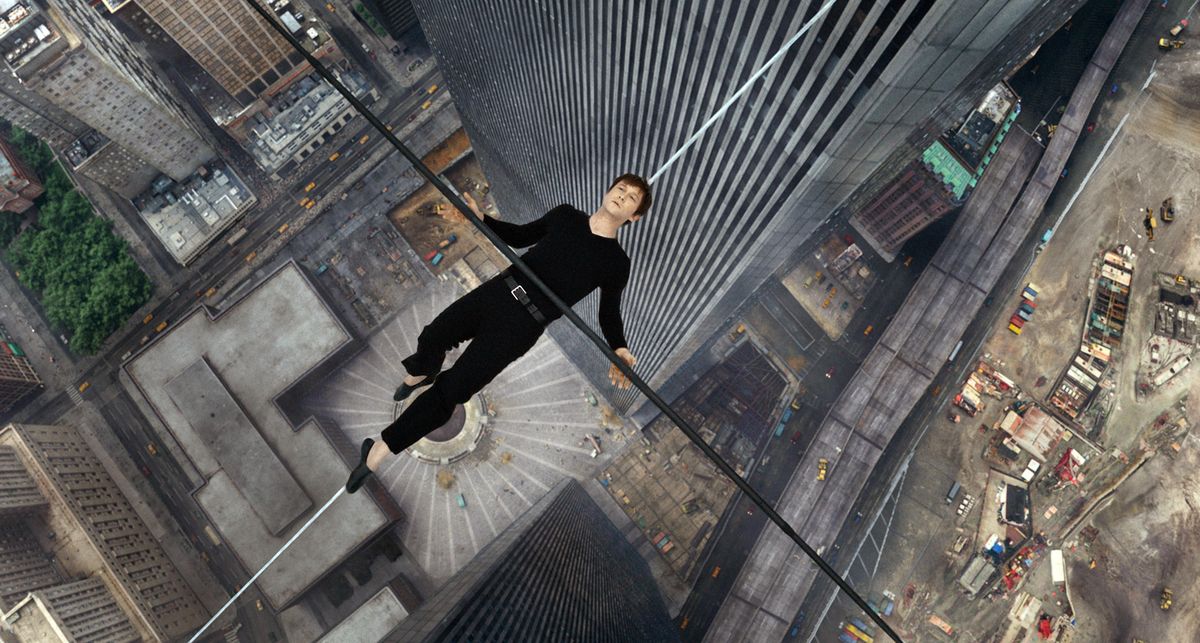‘The Walk’ earns its keep with spectacular third act

Can a great third act make a great film? Conventional wisdom would say no. It’s silly to spell out, but beginnings and middles are important, too.
But if you’re going to nail one section, the end isn’t a bad place to start. The audience leaves invigorated, and, in a best-case scenario, has already forgotten the slog it took to get there.
“The Walk,” a fictionalized rendering of Philippe Petit’s 1974 high-wire stroll between the World Trade Center towers, doesn’t entirely disprove the rule, but it certainly makes a seductive case.
Director Robert Zemeckis and cinematographer Dariusz Wolski have made a truly extraordinary and breathtaking 40 minutes of cinema, preceded by a mostly forgettable, cloyingly whimsical hour and change.
The stunt, which the gang refers to as “the coup,” is one for the cinematic ages. Zemeckis and Wolski take the camera to unprecedented angles to make you feel like you are really standing between the 110-story towers. It’s an undeniable, sweaty-palmed thrill walking above the clouds with Petit (played by Joseph Gordon-Levitt), full of tension and triumph.
The final sequence could have been enough for a film, but “The Walk” is more conventional than it might seem. It languishes for too long on origins of Petit’s obsession with wire-walking and the high rise towers, playing up his quirks and eccentricities for whimsy, not the story.
The beginning is shot like a fever dream of top hats, circus tents and unicycles. And, of course, there are the requisite underdeveloped characters – a curmudgeonly mentor (Ben Kingsley) and supportive girlfriend (Charlotte Le Bon) – to accompany him along the way.
Gordon-Levitt, sporting fake blue eyes and a thick French accent, embraces the manic showiness and near sociopathy of Petit – an artist with complete tunnel vision. It’s an interesting, all-out performance that still doesn’t go much deeper than surface level. That’s because the film would rather treat this real-life oddity like a fanciful fairy tale. Everyone seems like a character out of “Alice in Wonderland.”
Structurally, the film chooses to let Petit narrate his own story, literally from the top of the Statue of Liberty with the towers gleaming in the background. Though most likely know the outcome, this post-game voiceover strips away some of the inherent drama, and looks fairly cheesy, too.
That’s why it’s such a relief when the coup begins in earnest. Everything takes a turn for the dramatic – even the music.
Beyond the walk itself, the joy of the third act comes not from trying to comprehend the why, but in documenting the how of it all. The energy even gets an adrenaline boost when James Badge Dale enters the frame as J.P., a magnetic French-speaking New Yorker who brings an authentic levity and vitality to the film not a minute too soon.
“The Walk” isn’t nearly as elegant, grand or informative as James Marsh’s 2008 documentary masterpiece “Man on Wire,” but that doesn’t make it redundant or unnecessary – “The Walk” serves its cinematic purpose by showing you something that you’ve never seen before, from perspectives that seem as impossible as the stunt itself. Zemeckis just chose for too long to luxuriate in the fantasy, when the reality was more than enough.